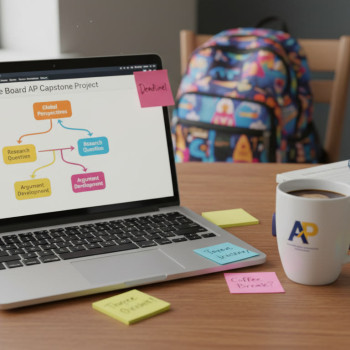Why an Annual Family AP Budget Planner Matters
When your child is navigating Advanced Placement (AP) courses and exams, the journey is both academic and financial. Many parents focus on study schedules, review books, and exam strategy—and those are important—but financial surprises can quickly distract a family. An Annual Family AP Budget Planner gives you calm, clarity, and control. This guide walks you through a practical planner, example budget, and smart decisions to make your family’s AP year feel intentional rather than reactive.

Start with Goals, Not Just Numbers
Before filling rows and columns, start with a family conversation. Ask: Which AP exams is my child most likely to take? Are we aiming for college credit, stronger admissions candidacy, or both? How much do we want to invest in tutoring, materials, and exam fees? These goals will guide which costs are essential and which are optional.
Questions to Guide Your Planning
- How many AP courses/exams does the student plan to take this year?
- Are any AP classes weighted differently at your high school (affecting GPA or class rank)?
- Do we need outside tutoring or review courses?
- What are our financial priorities: exam fees, prep materials, one-on-one tutoring, or backup funds for retakes?
- What deadlines should we align to—registration windows, school fee timelines, and scholarship application dates?
The Components of an AP Budget
An AP budget isn’t just “exam fee.” Break the plan into categories so you can prioritize and track spending across the year. Typical categories include:
- Exam Fees and Registration Costs
- Study Materials (books, practice exams, subscriptions)
- Tutoring and Coaching (1-on-1 or small group sessions)
- Supplemental Classes or Review Workshops
- Technology Needs (calculator upgrades, webcam for online tutoring)
- Contingency Fund (retake fees, emergency tutoring before the exam)
Prioritization Tip
Not all categories carry equal weight. If college credit is the goal, prioritizing high-quality tutoring and targeted practice for a specific AP exam may make sense. If the goal is broader academic enrichment, a mix of lower-cost study materials plus some coaching could be optimal.
Annual Family AP Budget Template (Example)
The following table is a flexible template you can copy into a spreadsheet or print. It’s organized by category, with columns for estimated cost, actual cost, payment date, and notes. Use it as a living document—update as you go.
| Category | Item/Detail | Estimated Cost (USD) | Actual Cost (USD) | Payment Date | Notes |
|---|---|---|---|---|---|
| Exam Fees | AP Exam Registration (School) | 200 | Per exam; check school deadlines | ||
| Study Materials | Review Books and Practice Tests | 80 | One-time purchase or digital subscription | ||
| Tutoring | One-on-One Tutoring (e.g., targeted sessions) | 600 | Estimate for 10–15 sessions | ||
| Workshops | Weekend Review Workshop | 150 | Optional but effective for intense review | ||
| Technology | Graphing Calculator Upgrade | 120 | Only for exams that allow calculators | ||
| Contingency | Retake/Last-Minute Tutor | 200 | Safety net for unexpected needs | ||
| Total | 1,350 | Adjust per number of exams |
Note: The numeric values above are example placeholders. Your family’s totals will vary with the number of AP exams and local costs.
How to Build Your Personalized Plan in 5 Steps
Step 1 — Inventory and Timeline
List the AP courses and possible exam months. Mark key deadlines for registration and school payments. Put them on a shared family calendar so everyone sees milestones and payment dates.
Step 2 — Estimate Costs and Assign Priorities
Use the table above and decide where you want to invest more. If one AP exam is critical for college credit, allocate more toward tutoring and practice tests for that subject and less toward lower-priority materials.
Step 3 — Build a Payment Schedule
Spread costs across months to avoid a single painful payment. For example, divide tutoring costs into monthly installments or pay for study materials early (books can be resold later). This reduces stress and improves predictability.
Step 4 — Monitor and Adjust
Keep receipts and update the planner after each purchase. If a test becomes unnecessary or the student changes plans, reassign funds to other needs like additional tutoring or practice exams.
Step 5 — Review with Your Teen
Include your child in the budget conversation. When students understand trade-offs—more practice tests versus extra tutoring—they learn responsibility and are often more motivated.
Smart Ways to Save Without Sacrificing Quality
Budgeting isn’t just about cutting costs. It’s about spending smarter. Here are practical strategies that many parents overlook:
- Borrow previous-year review books from the school or library; many concepts are stable year-to-year.
- Use free practice resources for early preparation; save paid services for targeted weak areas.
- Bundle tutoring sessions—some tutors offer discounts for blocked packages.
- Share costs for prep workshops when multiple students from the same school attend.
- Sell or trade used study guides after exams to recoup some expenses.
When to Invest in One-on-One Tutoring
One-on-one tutoring is worth considering when:
- The student is aiming for a high score that could translate to college credit.
- There are persistent gaps in content understanding despite classroom instruction.
- Confidence and test-taking strategy need focused attention.
Personalized tutoring—like Sparkl’s personalized tutoring—can fit seamlessly into a budget when paired with clear objectives: targeted sessions, tailored study plans, and measurable milestones. Their 1-on-1 guidance and AI-driven insights can make each session efficient, so you may need fewer total hours.
Real-World Example: Two Family Profiles
Seeing how different families allocate funds helps make the abstract concrete. Below are two hypothetical examples that show how priorities shape budgets.
| Family | Goals | Key Investments | Estimated Annual AP Budget |
|---|---|---|---|
| Family A (Credit Focus) | Earn college credit for 2 exams | 10–15 tutoring sessions per exam, multiple practice tests | $1,800–$2,200 |
| Family B (Balanced) | Strengthen transcript, moderate spending | One review book per exam, 4–6 tutoring sessions total, contingency fund | $700–$1,100 |
These are illustrative. Your family might fall somewhere in between—or switch strategies year to year.
Fitting Tutoring into the Budget: Practical Advice
If you’re considering tutoring, treat it like a targeted investment. Define the objective for each set of sessions—content mastery, timing, or test strategy—so progress is measurable. A tutoring provider that offers tailored study plans and progress tracking can increase ROI by focusing on known weak spots rather than repeating general review.
For example, Sparkl’s personalized tutoring emphasizes tailored study plans and expert tutors supported by AI-driven insights, which can help you buy fewer, more effective sessions. That kind of efficiency matters when you’re balancing multiple AP exams and a finite budget.
How to Measure Tutoring Effectiveness
- Set baseline scores (practice exam) and target score.
- Quantify improvement after a block of sessions.
- Ask tutors for specific takeaways and homework tailored to weak areas.
- Assess confidence and exam strategies, not just content recall.
Monthly Budgeting Example
To avoid last-minute financial stress, here’s an example of how a family could spread AP-related costs across the academic year. This assumes the family plans for three AP exams and uses a mix of materials and tutoring.
| Month | Planned Activity | Approx. Cost |
|---|---|---|
| August | Buy review books, initial practice exams | $150 |
| September | Start weekly tutoring sessions (block payment) | $200 |
| October | Graphing calculator or tech checks | $120 |
| November | Mid-year practice test and progress check | $60 |
| December | Winter review workshop | $150 |
| January–March | Targeted tutoring and practice tests | $400 |
| April | Final practice exams and contingency | $200 |
| Total | $1,280 |
Communication, Mental Health, and Time Management
Budgeting well also means protecting your child’s emotional bandwidth. Busy schedules, pressure around scores, and financial stress can overlap. Keep these principles in mind:
- Check in regularly about stress levels; academic investment should not cost wellbeing.
- Schedule downtime and realistic study blocks—short, focused sessions often beat marathon studying.
- Use the budget planner as a communication tool; it helps remove surprise and blame from decisions.
Adjusting Mid-Year: When to Reallocate Funds
Flexibility is your friend. Sometimes a student outperforms expectations and you can divert remaining funds to another area. Sometimes a subject proves tougher and you’ll need to increase support for that specific exam. Keep at least a small contingency (5–15% of your AP budget) so you can reallocate without stress.
Signs You Should Reallocate
- Practice tests show stagnation despite current efforts.
- Teacher feedback recommends additional review or coaching.
- Unexpected schedule changes reduce preparation time, requiring more intensive tutoring.
Final Checklist for Families
- Set goals for each AP exam—credit, mastery, or exposure.
- Create a shared calendar with registration and payment deadlines.
- Build a budget table and update it monthly.
- Decide whether to invest in 1-on-1 tutoring and define clear objectives for it.
- Keep a contingency fund for unexpected needs or retakes.
- Include your teen in budget decisions to foster ownership and reduce last-minute friction.

Summary: A Practical, Calm Roadmap
Planning an AP year doesn’t have to feel like juggling flaming batons. With clear goals, a simple template, and ongoing communication, families can transform anxiety into action. Use the budget table as a living document, revisit priorities when new information appears, and invest where it matters most. High-quality, targeted tutoring—like Sparkl’s personalized tutoring with tailored study plans, expert tutors, and AI-driven insights—can make a measurable difference without forcing open-ended spending.
Finally, remember that the AP journey is part of a much larger academic life. Scores matter, but so do curiosity, balance, and growth. Treat your Annual Family AP Budget Planner as a tool for both financial sense and family wellbeing—a way to invest smartly in your child’s present and future without sacrificing peace of mind.
Ready to Start?
Copy the table into a spreadsheet, schedule a 20-minute planning chat with your child, and set the first payment milestones. Small steps—planned and steady—add up to confident preparation and fewer surprises on exam day.




















No Comments
Leave a comment Cancel